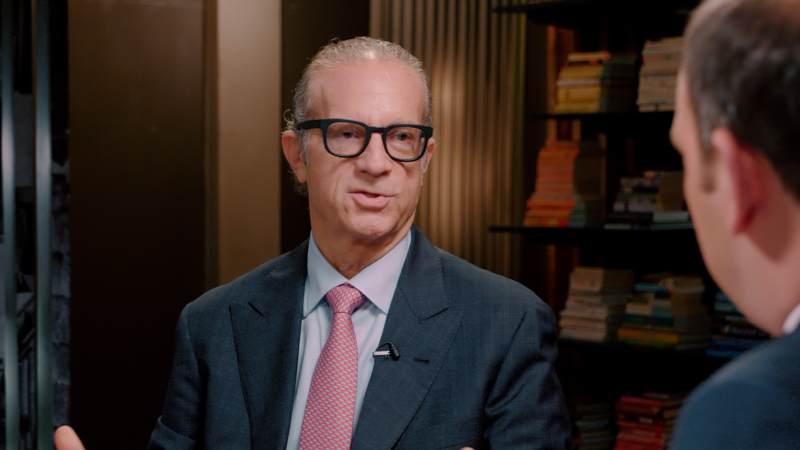This follows on from my previous essay in this series, and explores alternatives to dollar hegemony, and possible outcomes, in a little more detail.
I am again indebted to Professor Patrick Barron for the insights expressed in his March 2016 ‘podcasts’ that inspired these two essays in my ‘Economic Perspectives’ series.
At Bretton Woods in 1944 it was agreed that the US dollar should serve as the world’s “reserve currency” for international trade settlements. America’s undertaking to maintain convertibility into gold at $35 dollars to the ounce facilitated this agreement. Despite setting up the International Monetary Fund (IMF) with the explicit duty to monitor America’s adherence to this rule, the US Treasury and the Federal Reserve, its central bank, inflated the economy with “printed” dollars throughout the ensuing two decades without reference to its gold reserves.
By 1971 the idea of dollar convertibility into gold at $35 per ounce had become a distant memory of a bygone age of sound money. Professor Barron’s own estimate is that by 1971 the relationship was closer to $400 to an ounce of gold, a debasement of 90 per cent over 27 years of flagrant monetary abuse. It reached the point when foreign central banks (initially the Banque de France) attempted to put America’s redemption promise to the test, and President Nixon responded by simply taking America off the gold standard rather than face further depletion of America’s gold reserves.
Despite this the dollar remained the world’s recognised reserve currency, largely because the world’s other central banks had also succumbed to the inflationary drug habit. Nevertheless, after years of persistent and unrelenting debasement by the Fed, the world’s central banks are at last beginning to question the value, in terms of purchasing power, of all those dollars they are holding.
“the world’s central banks are at last beginning to question the value, in terms of purchasing power, of all those dollars they are holding.”
At the present time, central banks all over the world are holding dollars in the form of Treasury Bills, secured by the Fed on the basis of nothing more substantial or visible than a promise to “redeem” them. These dollar-denominated instruments represent debts owed by the US government to foreign holders of the bills, who purchased them with the dollars received as payment for goods and services exported to the USA.
Despite all the doubts concerning the dollar’s true worth, these American debts will continue to mount for as long as overseas suppliers are prepared to accept dollars in settlement of their exports. As it happens, those overseas suppliers have a powerful vested interest in maintaining the status quo, no matter how inherently fragile it is: if trade with America slowed or ceased because the dollar was no longer trusted as a repository of “full value”, and hence became unacceptable as payment for goods and services, a serious bout of unemployment in European and Far Eastern factories might follow.
Trading nations are made up of countless trading entities within their borders, all acting out of self-interest – or what they consider will give the best result for them. There is no place for altruism in big business! But no matter how complicit America’s trading partners have become in the pretence of dollar credibility, decades of wanton debasement by the Fed have inevitably taken a huge toll on its purchasing power, both in America and abroad. Being understandably more circumspect now, its trading partners are beginning to question the sense of holding dollar denominated US Treasury Bills as payment for their goods and services.
The Treasury Bills representing America’s trading debts generally carry a redemption date, although it is usual simply to “roll them over” for a further term of, say, 10 years. But the time will come when overseas holders of US Treasuries (as they are called), instead of extending debts by rolling them over, will opt instead to redeem the bills for a cash deposit at a bank of their choice. The redeemed dollars will simply come home to the Fed, risking an inflationary tsunami commensurate with the speed of redemption pursued by other central banks around the world.
It is idle to speculate on what could replace the dollar as the most favoured international settlement currency, or what might prove the catalyst to trigger such a change. But there certainly are contenders in the field, including the Chinese Yuan. The Chinese financial overlords are utterly inscrutable in terms of both their intentions and their methods. Using covert financial operations they are able to manipulate the pricing of the goods they export to the West, to the mounting frustration and annoyance of governments, particularly the USA, whose citizens complain continually about the loss of domestic jobs due to “cheap” Chinese imports.
The Chinese government is able to exploit the absence of civil liberty by keeping wage levels lower than in Western countries. The common cry from American (and other) manufacturers is that this leads to “unfair” competition – but they always have the option to switch their production to areas of alternative specialism and expertise. And there is also the question of quality. If cheap Chinese garments have created a market in “throw-away” clothing, that can only be because there was a latent demand for it. After all, every buyer has the choice to acquire goods of higher quality, albeit at higher prices. The answer is not to attempt a tit-for-tat remedy such as erecting a tariff wall against Chinese imports. That would serve only to punish American consumers who dare to buy cheap Chinese goods. Action and reaction is rarely a valid economic solution!
We know precious little about what the Chinese government is really up to, assuming it does indeed have a grand plan. But we do know that (i) the Chinese appear to have unashamedly merged their historic socialist operating model with a thrusting capitalist ethic; (ii) they do not appear to have indulged in the style of monetary laxative that central banks in the USA, UK, EU and Japan have pursued, almost to destruction, over the past eight years; and (iii) they have been bitten by the gold bug – big time.
Estimates are inherently unreliable, but many believe that China holds gold reserves of as much as 20,000 tonnes, compared with USA holdings of only 8,200 tonnes. China hoards all the gold it is able to produce, while also buying as much as it can. Read into that what you will, but the Chinese, like the Indians, know that gold does not deteriorate and is therefore virtually everlasting. Just think – if they were to declare a sustainable link with gold, the Yuan would become that rare commodity these days, a reliable store of value. As such, it could easily become the preferred settlement currency between nations.
“Read into that what you will, but the Chinese, like the Indians, know that gold does not deteriorate and is therefore virtually everlasting.”
Closer to home, European fallout could be the trigger for a monetary shake-up. The UK may be the first country to have taken the once unthinkable step of leaving the European Union, but I would not bet on it being the last. At this very moment France, Germany, Netherlands, Norway and Luxembourg are preparing for national elections in 2017, and Italy is about to stage a referendum on far-reaching constitutional reforms. Nothing can safely be ruled out or taken for granted – as both the UK referendum and the American election have already shown.
“The UK may be the first country to have taken the once unthinkable step of leaving the European Union, but I would not bet on it being the last.”
A German exit from the EU may seem improbable right now, but we should remind ourselves of the strength of popular German opposition to joining the Eurozone in the first place.
Because of Germany’s role as aggressor in two world wars, our former ‘allies’ were understandably reluctant to endorse the reunification of East and West Germany in the 1990s. Certain members of the present administration may deny that there was a link between (i) acceptance of German reunification and (ii) the switch from Deutschmark (DM) to Euro, but there is contemporaneous evidence that reunification of Germany would have been strenuously resisted – certainly by the French – without a positive move by Germany in the direction of European integration.
Either way, it happened!
After the symbolic fall of the Berlin Wall, Germany became a united country, and the DM gave way to the Euro. The point to note, however, is that from its outset in 1948, the DM had appreciated in terms of purchasing power against the US dollar. In the early 1970s, for example, one dollar could be exchanged for 1.75 DM. Ten years earlier, however, one dollar had yielded 3 DM – showing that over a mere 10 years there was a decline in the dollar’s purchasing power of over 70 per cent. The shape of things to come!
Germany, unlike its Eurozone neighbours, achieves a budget surplus year after year. The European Central Bank (ECB) holds this surplus, denominated in Euros, where (via the Target2 settlement system) it supports Eurozone economies that have perennial budget deficits. Germany thus lacks autonomous control over its own surpluses and is, in effect, supporting the rest of Europe.
Holding huge reserves in Euros, one the world’s most fragile currencies, is hardly conducive to financial security. The Euro’s weakness is not surprising, however, considering the massive doses of money printing (‘quantitative easing’) inflicted by ECB chief Mario (“whatever-it-takes”) Draghi, in strict accord with his absurd ‘kick-start’ Keynesian policies. But, for as long as Germany is in the Eurozone straightjacket, there is nothing it can do about that.
[Readers may be surprised to know that, even after so many years, billions of DM are still in circulation. The money can be exchanged at the German Bundesbank, and in some shops you can still pay for your purchases with DM. Indeed the exchange rate of DM into Euro was, and still is, fixed at 1.96:1]
At the time of conversion from DMs to Euros the German people, never forgetting the ruinous hyperinflation of the 1920s, were deeply apprehensive of losing their stable DM and replacing it with a currency susceptible to high rates of inflation.
Their fears were well founded. Since the financial crisis in 2008, the Euro as a stable monetary system has been seriously called into question and the future of the Euro in Germany remains uncertain as more and more Germans call for a return to the DM. Quite simply, they have had enough of paying off the debts of countries that persistently run their economies at a deficit. Recent polls show a majority of Germans favouring the DM’s restoration.
“Quite simply, they have had enough of paying off the debts of countries that persistently run their economies at a deficit.”
If Germany were to depart the Eurozone and reinstate the DM other countries would undoubtedly follow, in all probability adopting the DM rather than their old, discredited, drachmas, lire, francs, escudos and pesetas. Naturally, this would spell the demise, once and for all, of the Euro. But such a move could take place only if Germany is able to inspire the trust of its trading partners that the Bundesbank will maintain the integrity of the DM and not fall victim to the old inflationary temptations.
Note that Germany itself has sufficient gold reserves to tie the DM to gold and establish an honest redemption market where it would buy gold and issue DMs, and redeem DMs for gold. Such an action on the part of the Bundesbank would force the Fed to abandon its policy of printing fiat money, and follow the German lead. A sound DM would serve as an excellent role model for the dollar and would demonstrate the madness of debasing the currency by more and more printing.
A market correction leading to a transition to sound money would be both disruptive and painful – but that is inescapable when the market at last recognises the fraud in the current system and restores the world to an honest financial basis. It would, at very least, demonstrate to the American people – indeed the world – that saving, rather than creating still more fiat money, is the route to solvency.

With workers pushed to breaking point, is it now time to call time on predatory business models?

Both COVID-19 and the climate crisis are being used as camouflage for central bankers to throw more printed money into a broken system.

With proper access to land denied to the vast majority, is it now time to reclassify trespass as a revolutionary act?